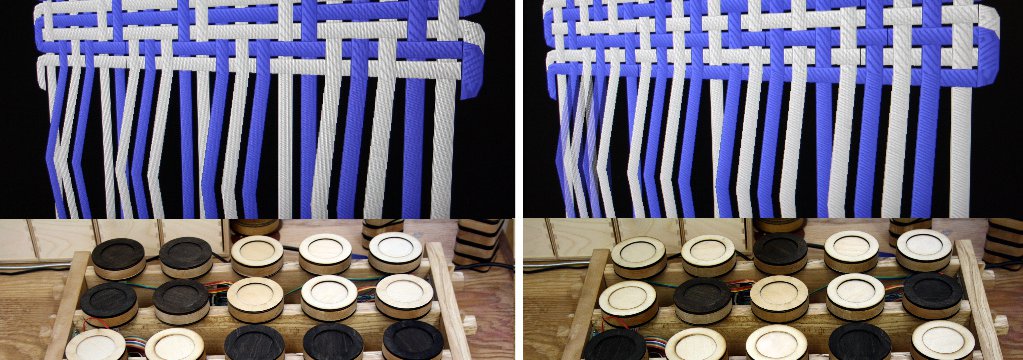Penelope

How can we make tools that help understand the ancient weaver's mind? How they calculated and solved the first recorded mathematical proofs, embedding them in pattern. How do certain forms of technology define our relationship with the world? For the Greeks of antiquity, weaving was the fundamental link to the cosmos. Today we use computational structures to reason about ourselves and our society, our CPUs replicating the pattern manipulating circuits that link them with the textile technology they were originally built from.
The Penelope project was a 5 year ERC research project by Ellen Harlizius-Kluck with Flavia Carraro, Giovanni Fanfani, Annapurna Mamidipudi and Alex McLean alongside Then Try This (previously called FoAM Kernow), which ended in 2022. Our role was to construct citizen science exhibits for the Deutsches Museum in Munich, the worlds largest science and technology museum and the nearby Munich museum for plaster casts of classical sculptures. our mission included designing and constructing tangible programming systems for livecoding looms and new forms of robotic weavers that were able to manipulate ancient loom technology. Much of this work was showcased at the end of the project as part of the Looms in Motion online exhibition.
Video from our first robot livecoding performance in the The Museum für Abgüsse Klassischer Bildwerke, Munich with ancient Greek poetry recital mixed with livecoded music
This project followed on from our 2015 weaving codes:coding weaves project where we investigated building new forms of hardware, making tangible programming interfaces, taking the long view on technology and investigating other digitally based societies, such as the Inca with their quipu knot databases.
Additional funding for Penelope was provided by the Cultivator Skills Development Programme (the European Social Fund, Arts Council England and Cornwall Council).
Alex McLean has since joined Then Try This, to continue his work researching algorithmic patterns, funded by a UKRI Future Leaders Fellowship, and building on our collaborations as part of the PENELOPE project and its precursors.
